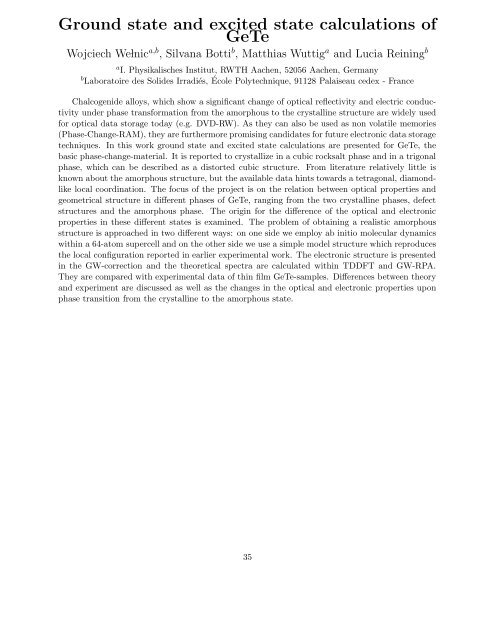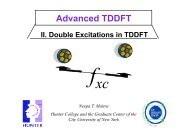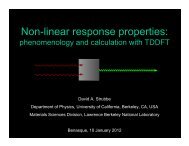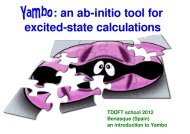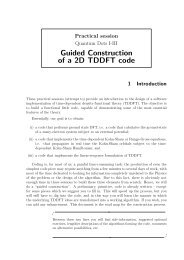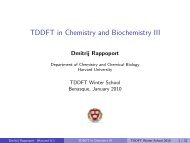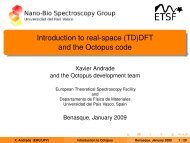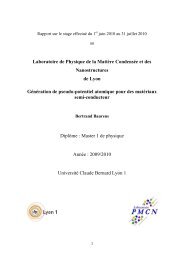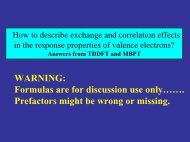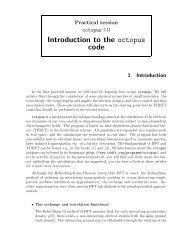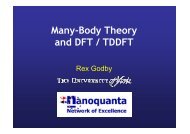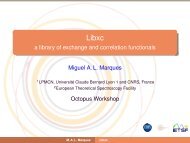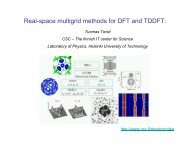TIME DEPENDENT DENSITY FUNCTIONAL THEORY ... - TDDFT.org
TIME DEPENDENT DENSITY FUNCTIONAL THEORY ... - TDDFT.org
TIME DEPENDENT DENSITY FUNCTIONAL THEORY ... - TDDFT.org
- No tags were found...
You also want an ePaper? Increase the reach of your titles
YUMPU automatically turns print PDFs into web optimized ePapers that Google loves.
Ground state and excited state calculations of<br />
GeTe<br />
Wojciech We̷lnic a,b , Silvana Botti b , Matthias Wuttig a and Lucia Reining b<br />
a I. Physikalisches Institut, RWTH Aachen, 52056 Aachen, Germany<br />
b Laboratoire des Solides Irradiés, École Polytechnique, 91128 Palaiseau cedex - France<br />
Chalcogenide alloys, which show a significant change of optical reflectivity and electric conductivity<br />
under phase transformation from the amorphous to the crystalline structure are widely used<br />
for optical data storage today (e.g. DVD-RW). As they can also be used as non volatile memories<br />
(Phase-Change-RAM), they are furthermore promising candidates for future electronic data storage<br />
techniques. In this work ground state and excited state calculations are presented for GeTe, the<br />
basic phase-change-material. It is reported to crystallize in a cubic rocksalt phase and in a trigonal<br />
phase, which can be described as a distorted cubic structure. From literature relatively little is<br />
known about the amorphous structure, but the available data hints towards a tetragonal, diamondlike<br />
local coordination. The focus of the project is on the relation between optical properties and<br />
geometrical structure in different phases of GeTe, ranging from the two crystalline phases, defect<br />
structures and the amorphous phase. The origin for the difference of the optical and electronic<br />
properties in these different states is examined. The problem of obtaining a realistic amorphous<br />
structure is approached in two different ways: on one side we employ ab initio molecular dynamics<br />
within a 64-atom supercell and on the other side we use a simple model structure which reproduces<br />
the local configuration reported in earlier experimental work. The electronic structure is presented<br />
in the GW-correction and the theoretical spectra are calculated within <strong>TDDFT</strong> and GW-RPA.<br />
They are compared with experimental data of thin film GeTe-samples. Differences between theory<br />
and experiment are discussed as well as the changes in the optical and electronic properties upon<br />
phase transition from the crystalline to the amorphous state.<br />
35


